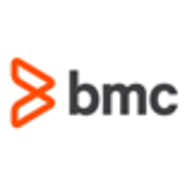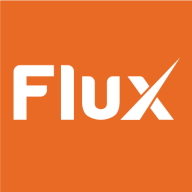


Control-M and Flux are competing in the process automation software market. Control-M seems to have an upper hand due to its wide industry adoption and customer support, while Flux stands out in terms of cost-effectiveness and feature richness.
Features: Control-M offers job scheduling, workload automation across hybrid environments, and enhanced security measures. It has a sophisticated rule-based system that supports complex operations. Flux provides comprehensive workflow automation, seamless integration capabilities, and is designed for scalability and rapid deployment. It emphasizes intuitive operation and extensive customizability.
Ease of Deployment and Customer Service: Control-M is supported by extensive documentation and proactive customer support which aids in smooth deployments. Flux offers a quicker deployment process with straightforward installation. Its customer service is dedicated and personalized, particularly useful for startups and agile operations.
Pricing and ROI: Control-M generally requires a higher initial setup cost with an emphasis on long-term ROI via improved automation efficiencies. Flux presents a cost-effective pricing model that delivers faster break-even through quick result delivery. While Control-M may involve a larger upfront investment, its capabilities offer substantial strategic value. Flux is a compelling alternative with efficient cost structures and impressive automation results.
| Company Size | Count |
|---|---|
| Small Business | 11 |
| Midsize Enterprise | 8 |
| Large Enterprise | 18 |
| Company Size | Count |
|---|---|
| Small Business | 30 |
| Midsize Enterprise | 15 |
| Large Enterprise | 123 |
JAMS is an automation and job scheduling solution designed for workflow optimization, catering to businesses large and small with flexible licensing and integration options.
Offering both Core and Advanced packages, JAMS supports a range of environments from small teams to large-scale operations. Its standout features include integration with platforms like PowerShell, SQL, and SAP, coupled with capabilities such as dependency management and natural language scheduling. JAMS simplifies job management, centralizes workflows, and boosts productivity with its robust automation features. Customizable workflows and insightful logging make it adaptable for diverse needs, supported by responsive customer service ensuring seamless operations.
What are JAMS's key features?In industries, JAMS is employed for automating workflows and managing batch jobs. Organizations utilize it for SSIS, SQL Server tasks, file transfers, and integrating with vendor systems, achieving efficient file automation and data management. Scheduler enables precise execution of thousands of tasks daily, enhancing operational efficiency.
Control-M by BMC is engineered to manage hybrid cloud workflows, offering orchestration capabilities starting at $29,000 annually. Aimed at helping growing teams, it efficiently supports cross-environment scheduling and automation needs.
Control-M offers robust cross-platform scheduling, automation, and integration with applications such as SAP and Informatica. Users appreciate its ease of use with a graphical interface, centralized management, and monitoring capabilities. Advanced features, including Managed File Transfer, automated error handling, and real-time alerts, enhance productivity. The ability to unify workflows and support diverse environments makes Control-M a trusted tool in many sectors. While improvements in reporting flexibility and API integration with tools like ServiceNow are needed, addressing performance issues during upgrades could enhance its value. Offering improved support for new technologies and cloud environments is beneficial, with cost-effectiveness being a consideration.
What are the key features of Control-M?Control-M is leveraged in industries like finance for enterprise scheduling and data management, supporting mainframe, Linux, Unix, Windows, and cloud platforms. It contributes to workflow orchestration and workload automation, improving operational efficiency and enhancing IT infrastructure across those environments.
Flux is a technology-driven tool designed to optimize workflow management, offering an agile approach and seamless integration to enhance project execution for businesses.
Designed for teams aiming to streamline processes, Flux provides robust features supporting efficient data flow and task management. Its architecture enables users to track projects, automate tasks, and improve communication among team members. The platform's comprehensive analytics offer insights, driving effective decision-making and boosting productivity.
What are the key features of Flux?Flux finds applications across industries such as finance, healthcare, and IT, where workflow automation is crucial. By tailoring automation and analytics, companies achieve marked improvements in operational efficiency, adapting processes for specific industry demands and ensuring compliance with sector standards.
We monitor all Managed File Transfer (MFT) reviews to prevent fraudulent reviews and keep review quality high. We do not post reviews by company employees or direct competitors. We validate each review for authenticity via cross-reference with LinkedIn, and personal follow-up with the reviewer when necessary.